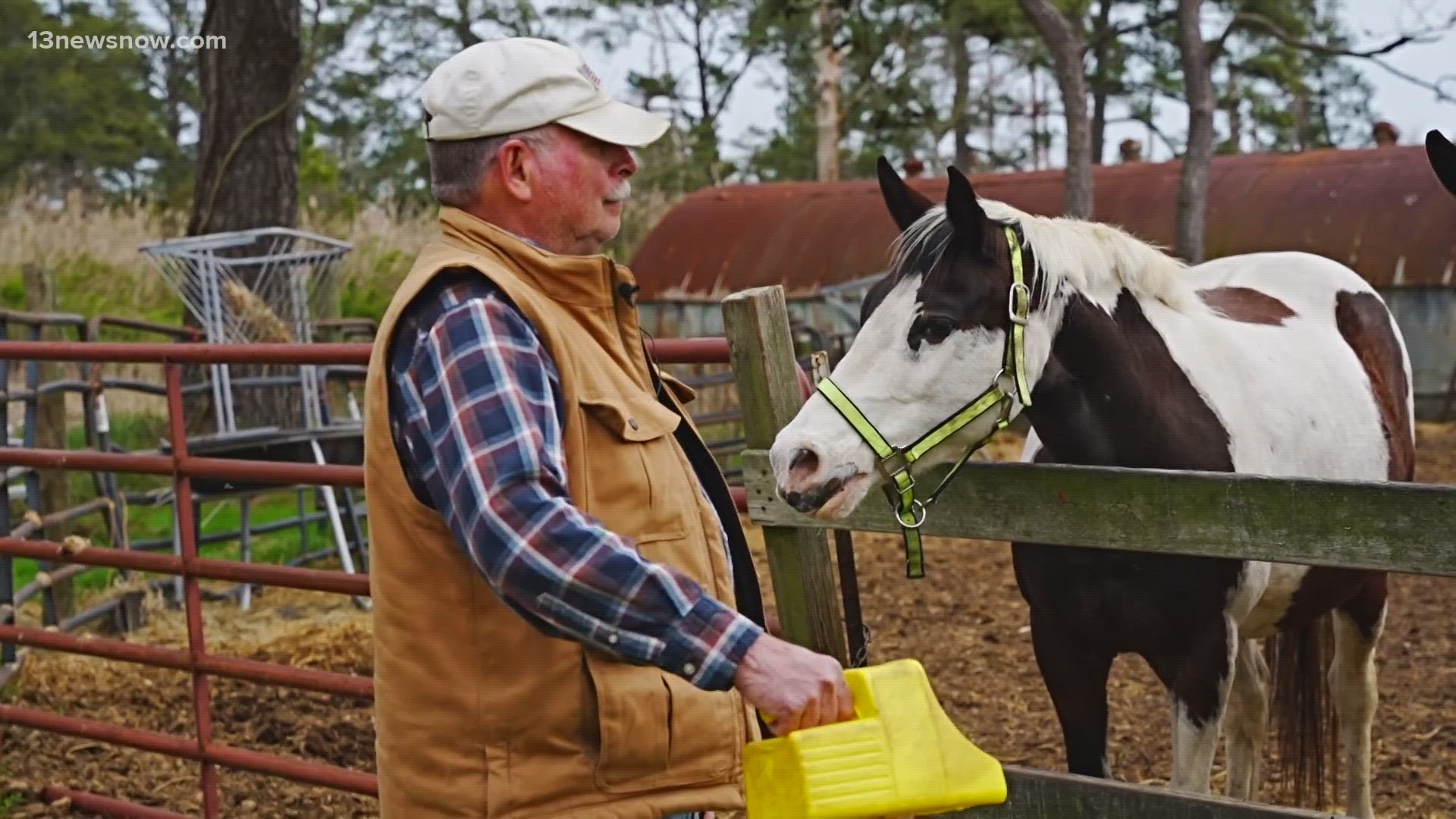CHINCOTEAGUE, Va. — Billy Beebe still remembers his childhood job on Chincoteague Island.
"My job when I was little, was to take a watering hose and put it in the bathtub so the ponies could drink," Beebe laughed.
"They liked me but I was on the other side of the fence, because they could kick and fight over that water."
Beebe, almost 70 years old, is the last head of the Beebe Ranch, the real-life location and setting for the famed and popular children's novel "Misty of Chincoteague" written by Marguerite Henry in 1947. The novel, focusing on Billy's cousins and grandparents, brought generations of readers and fans to the once 100-acre plot of land off the Eastern Shore of Virginia.
For generations, readers grew attached to real-life pony "Misty" as well as the ranch, and at its height, the property was the home to as many as 150 ponies near the Virginia-Maryland border.
"I don’t think of myself as a celebrity. Misty is, because she actually made this island famous," Beebe said.
Now, Beebe and his sister say it's time to move on and sell the ranch after it's been in their family since the early 1900s.
“She’s 83, I’ll be 70, it takes a lot and it still takes work. With a couple of my ponies they love to break out, so it keeps me busy," Beebe said with a smile.
Developers have approached Beebe with an offer to buy and divide the back plot of the remaining 10 acres of the ranch. But Beebe says he'd rather his ranch go somewhere else.
“They wanted to save the ranch because it’s the last of the property," Cindy Faith, the executive director of the Museum of Chincoteague Island, said. "Financially, they could have sold it a long time ago and made a lot of money. Since we’ve had this verbal agreement they’ve been offered more money, substantially more money," she told 13News Now.
This year, the museum's board made the decision to try and fundraise $625,000 — the amount the Beebes were offered — to purchase the ranch and make it a permanent fixture of their museum and history.
"If you’re told you have a choice to save it or forget about it, why wouldn’t you save it?" Faith asked.
To date, they've raised more than $400,000 with contributions coming from all across the United States.
A symbol of how Billy's home means more than the price tag.
“It celebrates us and reminds us of what’s worth saving," Faith said.
“When the museum announced, we had some emails saying 'We’d like to give you the same amount. But I don’t want them, I want the museum to preserve it."

